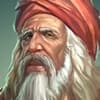Field of Glory II: Medieval Cheats
Hints & Tips
Generals
Try to keep your units within command range of a general in line of command. If they are out of command range they will be less maneuverable.
Generals give the unit they are with a big boost in close combat, but they cannot issue orders while they are in close combat, so the units of their command will be deemed out of command range until the close combat ends, unless they are within range of another general in line of command.
Also, generals in close combat risk being killed or incapacitated, which can have a disastrous effect on the morale of nearby units. Moving a general to an unsteady unit will increase the chance of the unit rallying. Moving him to a routing unit will increase their chance of rallying, but is risky as he cannot leave again until the unit stops routing, and he will go off the map with them if they don’t rally.
Cohesion
The key to defeating the enemy is to make his units drop Cohesion (Morale) until they break and run. This is much more important than inflicting casualties, as units will often break long before they have suffered heavy casualties, and when they do so, nearby enemy units may also suffer cohesion loss even though they might be at full strength.
Disrupted or Fragmented troops fight less well. Fragmented troops are likely to rout if anything else goes wrong, or if they are charged. Fragmented troops cannot charge and cannot move far. If they attempt a Fall Back action when the enemy is in charge reach, they will probably break. However, if you can keep the enemy occupied with other units they may get a chance to rally.
When a unit routs, its opponents may pursue. You cannot issue orders to routing troops until they rally, nor pursuers until they stop pursuing. Troops that pursue off the visible map may return later. Routers won’t.
Shooting
Although an enemy unit can be worn down eventually by casualties, reducing their cohesion is the real object of shooting. The more shooting damage a unit suffers in a turn, the more likely it is to lose cohesion. It, therefore, pays to concentrate your fire as much as possible on individual enemy units. Troops shoot better at short range, with full arc of fire, and when stationary. They shootless effectively if they move or turn.
If you are not advancing, try to anticipate enemy movements and have your troops in position before the enemy is in range. Artillery cannot shoot at all if they move or turn.
Ammunition is limited – shooting becomes much less effective when ammunition is low. It may therefore be better for a unit to hold its fire if the target is at long range or out of full arc, or if you cannot shoot at the target with more than one unit.
Close Combat
For close combat Points of Advantage are the key to victory. Try to ensure that your units have the best possible matchups, and try to avoid charging frontally against enemy who will have the advantage in close combat.
In the wrong situation, a powerful unit can lose to a much weaker one. Along with the optimal use of firepower, advantageous matchups are key to victory.
Some units have capabilities which give them an advantage in the initial impact against some troops. Some of these require the unit to be stationary – i.e. not charging. For the others, it does not matter whether the unit is charging or receiving the charge as the unit receiving the charge is assumed to countercharge a short distance if that fits the situation.
A unit that is in melee against more than one enemy unit fights less effectively against each of them. Ganging up multiple units in close combat against an enemy unit, therefore, increases the chance of defeating it.
Once in close combat, units continue to fight each turn until one side routs or breaks off. Higher quality troops fight better and are more resilient. When a unit routs, its opponents may pursue. You cannot issue orders to routing troops until they rally, nor pursuers until they stop pursuing. Troops that pursue off the visible map may return later. Routers won’t.
Flank or rear attacks
Flank or rear attacks can be very dangerous. For devastating effect, the enemy unit first needs to be engaged in close combat by another unit.
Try to avoid leaving your units vulnerable to flank charges.
Try to set up flank charges against enemy units. Remember that for a charge to qualify as a flank charge, the charger must start its whole move behind the flank of the target unit.
If in doubt, remember that the charge tooltip will say whether a charge will count as a flank charge or not, and whether it will have full effect or not.
Terrain
Some terrain disorders troops especially mounted troops and heavy foot. The worse the disorder, the more the fighting ability of the unit is affected. Troops charging enemy who are in disordering terrain are disordered as if they were in the terrain themselves. However, troops in open terrain that are attacked by troops in disordering terrain are not disordered by the terrain, though the combat will be treated as not in “open terrain”.
Troops in close combat have an advantage if on higher ground than the enemy – the advantage is much greater if the slope is steep (height differential 100 or more). Troops in cover take reduced shooting damage, especially when stationary.
Foot can hide in buildings, woods and some other terrain. They can only be seen by nearby enemy or if they shoot. Mounted troops can be seen if on the edge of woods, but will be hidden if further in. All troops will be hidden if no unit in the enemy army has a line of sight to their position. Before some battles begin you may be able to redeploy your troops. Position troops to make good use of terrain. Troops behind obstacles or fortifications gain various advantages against attacking enemy. They lose these if they themselves charge. Troops behind obstacles (other than fortifications) lose any cover provided by the obstacle if they move or turn.
Knowing Your Troop Types
Heavy Foot are more resilient than Medium Foot/Warriors, but worse affected by terrain.
Foot shock troops (Impact Foot, Offensive Spearmen and Pikemen), will follow up pushed back enemy foot if they win a round of combat decisively. They will only do so if they originally initiated close combat – they won’t follow up if they
were originally charged.
Follow ups may lead to a unit getting into a position where it can be flank charged by another enemy unit. Judgement is therefore required in deciding whether to charge or whether to wait for the enemy to attack. You can set up situations where the enemy pushes forward into a position where they can be flanked – if your unit fighting them frontally lasts long enough!
Light Foot, Bowmen and Mob are vulnerable to mounted troops in the open. Try to keep them in terrain or behind obstacles when cavalry are about. Heavy Foot, Medium Foot and Warriors are all capable of repelling mounted charges in open terrain when they are steady, but will be at risk if disrupted. Light Foot can’t charge most non-light troops in open terrain.
Light troops (Light Foot and Light Horse) and non-lancer Cavalry/Camelry can evade enemy charges (also Highly Superior or Elite lancers who have 100% Bow capability), but may get caught, especially if the chargers start their whole move close to them. Troops that evade off the battlefield may return later.



